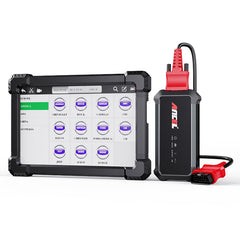Modern cars are complex machines, relying on intricate technology for security and convenience. One crucial component is the Immo Key, which goes beyond simply starting the engine. This article delves into the intricacies of immo keys, exploring their functionality, benefits, potential issues, and future trends.
How Immo Keys Work: A Silent Dialogue
An immo key, short for immobilizer key, contains a microchip with a unique code. When inserted into the ignition, this chip communicates with the car’s Engine Control Unit (ECU). If the codes match, the ECU allows the engine to start. This digital handshake prevents unauthorized vehicle use, acting as a powerful theft deterrent.
The Immo Key System: A Three-Part Harmony
Three primary components work together to form the immo key system:
1. The Transponder Chip: The Key’s Identity
Embedded within the immo key, the transponder chip holds the unique identification code. This code is the key’s digital fingerprint, allowing the ECU to verify its authenticity.
2. The Engine Control Unit (ECU): The Brain of the Operation
The ECU acts as the central command center, receiving the transponder chip’s code and deciding whether to grant access. It’s the gatekeeper of the vehicle’s ignition system.
3. The Receiver: Bridging the Gap
Located near the ignition, the receiver acts as the communication link between the transponder chip and the ECU. It facilitates the crucial exchange of information that determines whether the car will start.
Evolution of Immo Keys: From Security to Convenience
Immo keys were initially introduced to combat car theft. However, their functionality has expanded significantly over time.
Enhanced Security Against Theft
The unique code within each immo key makes it virtually impossible to hotwire or start the car without the correct key. This significantly reduces the risk of vehicle theft.
Added Convenience for Drivers
Modern immo keys often incorporate features like remote locking/unlocking, keyless entry, push-button start, and personalized driver settings, adding convenience and enhancing the driving experience.
Troubleshooting Common Immo Key Problems
While immo keys are generally reliable, occasional issues can arise.
Key Not Recognized
This can be caused by a damaged transponder chip, a weak key fob battery, or issues with the ECU or receiver.
Programming Errors
Sometimes, an immo key may need to be reprogrammed to synchronize with the vehicle’s ECU.
Signal Interference
External factors can disrupt the communication between the key and the car, preventing the engine from starting.
Professional Tools for Immo Key Issues: The ANCEL X7
Diagnosing and resolving complex immo key problems often requires specialized tools like the ANCEL X7 OBD2 Scanner. This advanced diagnostic equipment can analyze the immo system, identify faults, and assist with key programming.
DIY vs. Professional Help: Knowing When to Seek Expert Assistance
Simple tasks like replacing a key fob battery can be handled by car owners. However, more complex issues, particularly those involving programming or transponder chip malfunctions, require the expertise and specialized tools of a qualified automotive technician.
The Future of Immo Keys: Continued Innovation
Immo key technology is constantly evolving. Future advancements may include enhanced security features, seamless smartphone integration, and more sophisticated keyless entry systems.
Conclusion
Immo keys are a vital part of modern vehicle security and convenience. Understanding how they work and knowing how to troubleshoot common issues can help ensure a smooth and secure driving experience. As technology progresses, immo keys will continue to play a crucial role in the automotive landscape.

